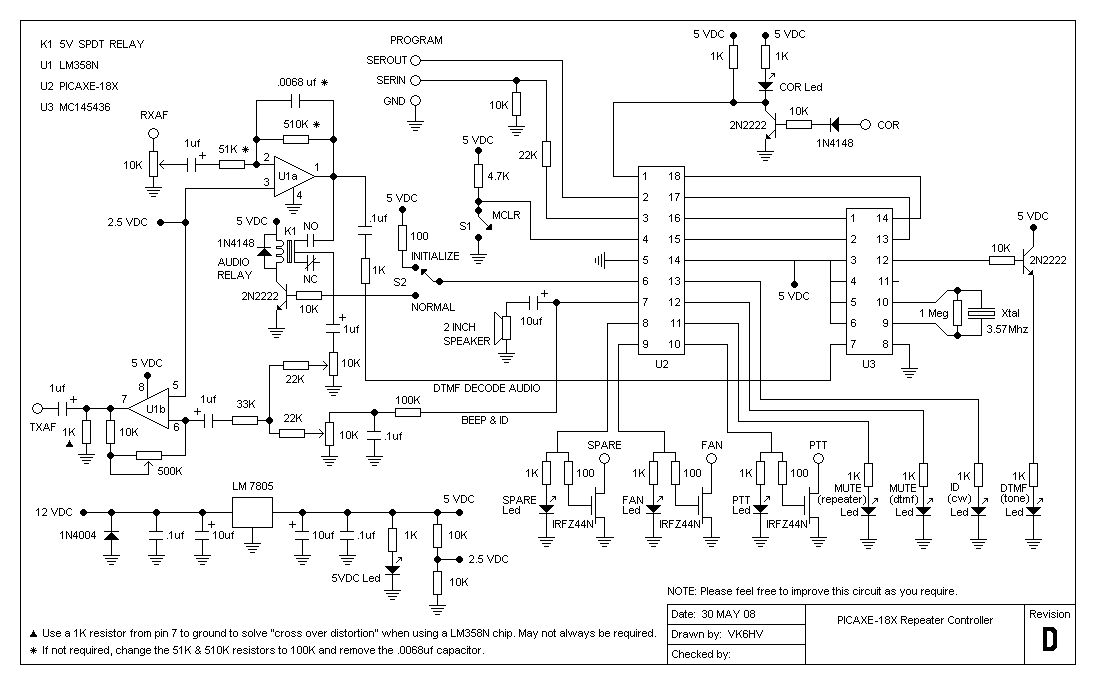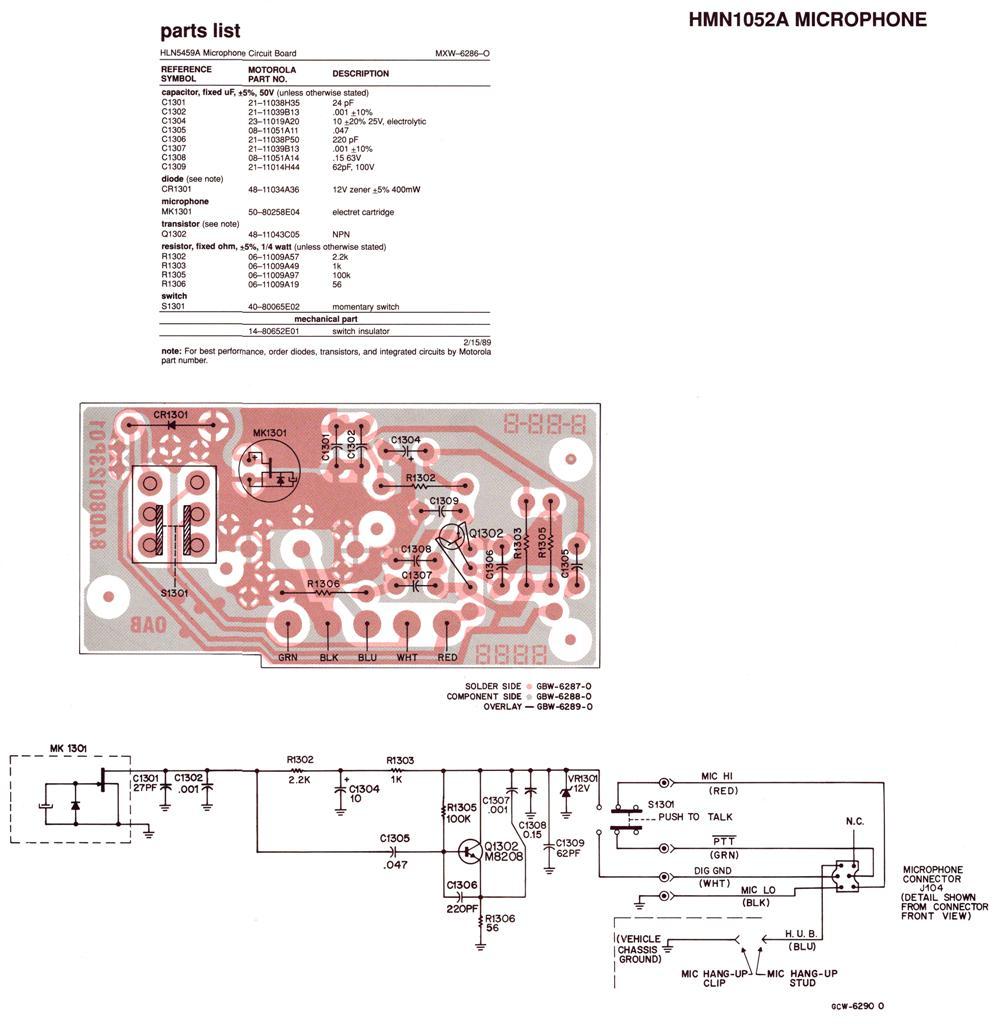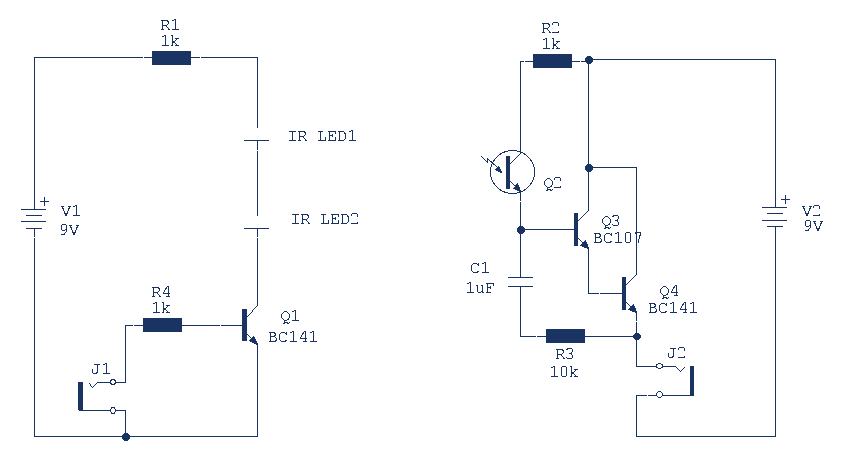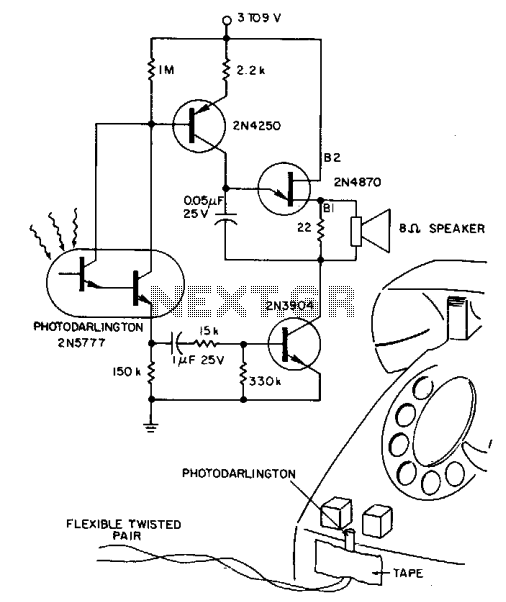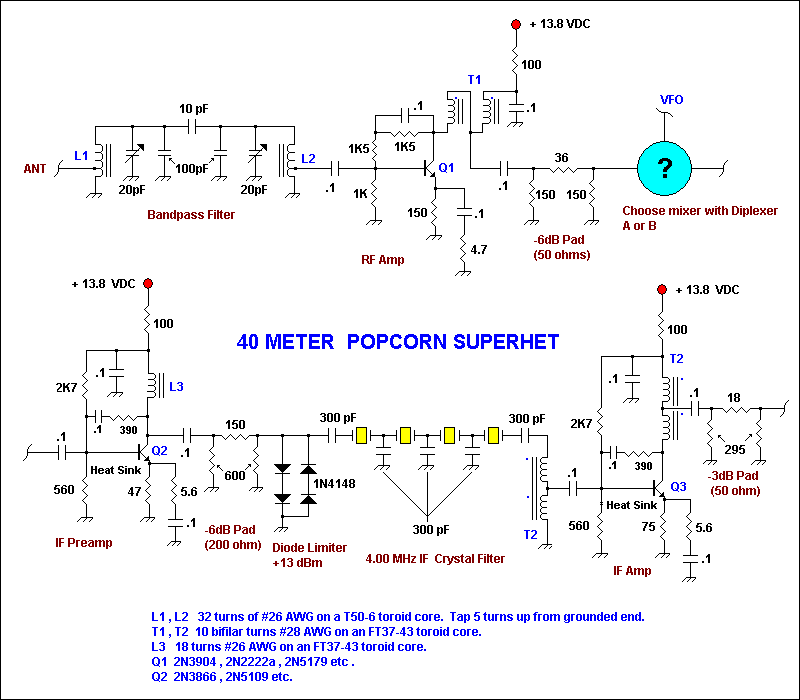
Motorola Mitrek conversion to repeater or link

This document aims to engage individuals interested in the serious construction of a quality product. It is highly technical but written in an open and honest manner. It is intended for Amateur Radio enthusiasts (not for commercial use) and is available at no cost. The document encourages discussion, modifications, and improvements without prior notice. Individuals with a basic electronics background and some repeater building experience are welcome to deviate from the author's design. Understanding schematic diagrams is essential. Newcomers to repeater operation may benefit from additional technical literature relevant to this documentation. It is estimated that constructing each radio will take approximately 40 hours, particularly for the first unit. Free technical support is not provided, although printed documents may be available occasionally for a modest fee covering postage and handling. Several images within this document can be enlarged by clicking on them for better detail, while others are stored as large files on the server and are not zoomable. Some images may depict general practices and may not accurately represent the completed product. For instance, one image shows a jumper for 9.6V switching with incomplete soldering, as production was paused for photography. This clarification indicates that the final product may differ from the documentation. Some links on this page open new browsers, while others allow users to return using the "back" button, which has received mixed feedback from readers. The document is best viewed with Internet Explorer 5.0 or later, with the screen resolution set to 1024 x 768 or higher. Apologies are made for the document's compatibility with other browsers such as Firefox, Netscape, or Opera. Users are permitted to copy, print, and distribute this document for non-profit purposes, provided the author is credited. The objective of Amateur Radio is to cultivate the art of radio and enhance operating practices, serving as a model for others, including the commercial sector, to demonstrate the capabilities of Amateur Radio systems in providing public service communications during emergencies. This encompasses the technical aspects necessary to produce effective operating repeaters. To clarify this philosophy, the document will begin with fundamental theory. "Two-way" radio systems transmit information (voice, data, etc.) by modulating the originating transmitter and decoding this modulation at the receiving end back into a usable format. The quality of this process significantly depends on the setup of the system. While anyone can assemble a system that functions to some degree, the design specifications outlined in this document call for a more refined approach. A typical commercial system utilizes an audio modulation frequency range of 300Hz to 3KHz. This document will address modulation frequencies and levels that may differ from standard practices. Additionally, effective technical management is essential, requiring organization and discipline among technicians. It is important to plan the system design and adhere to it, maintaining good practices throughout the process. One such practice is establishing level references, often referred to as "benchmarks" or "baselines." While traditional Amateur methods utilized linear measurements (volts, watts, etc.), most SRG designs and operations employ logarithmic units in "dBm." Once familiarized, this approach facilitates a comprehensive understanding when designing a system, assessing frequency response, and eliminates guesswork in troubleshooting subtle level issues. Further information on this topic can be accessed through provided links.
The document serves as a foundational guide for individuals aiming to construct high-quality Amateur Radio systems. It emphasizes the importance of a solid understanding of electronic principles and schematic interpretation, which are critical for successful repeater operation. The anticipated construction time of approximately 40 hours highlights the complexity and precision required in such projects.
In terms of technical specifications, the document outlines the modulation techniques and frequency ranges necessary for effective communication. The choice of using logarithmic units such as dBm instead of traditional linear measurements is a significant aspect of modern radio design, as it allows for more straightforward analysis and troubleshooting of signal levels.
Furthermore, the document encourages adherence to established technical practices, including the establishment of benchmarks for system performance evaluation. This structured approach not only enhances the reliability of the Amateur Radio system but also fosters a culture of continuous improvement and knowledge sharing among enthusiasts.
Overall, this document serves as a valuable resource for those committed to advancing their skills in Amateur Radio construction and operation, providing insights into both theoretical concepts and practical applications.This document is written in attempt to include everyone interested in serious construction of a quality product. Its very technical, however, written openly and honestly. It`s designed for Amateur Radio (not commercial) at no cost to obtain and is open for discussing, changes and improvements without notice.
Should you feel qualified you are welco me to deviate from the Author`s design. You need to have a basic electronics background with some repeater building experience. Understanding schematic drawings is required. If you are new at the repeater operation you might want to check out additional technical books relevant to this documentation. Anticipate about 40 hours to construct each radio, especially the first one. No free technical support is available, however, printed documents are available on an occasional bases for a modest cost for P & H.
Several images (pictures) on this document, while on-line are enlargeable simply by clicking on them. This gives you an opportunity to "zoom in" for better details should you need it. Other images are not, being unnecessary large files being stored on the server. Some images on this page show only general practice and may not be the completed product or bear accuracy.
For example, one image shows a jumper for 9. 6v switching with the soldering not completed. Production was paused to take some pictures at the time. This is brought up to clarify the final product may be finished without documentation and may vary from what you see here. Some links (that you click on) within this page open new browsers, while others permit you to hit your "back" button.
Reports from readers can go either way on this method of navigation. This document is best viewed with I. E. 5. 0 or later with your screen set for 1024 x 768 or higher resolution. Apologies; time did not permit building this document to be completely friendly with other browsers such as Firefox, Netscape or Opra. You are permitted to copy, print and distribute this document for non-profit use while keeping the Author credited.
The contact information is on the main page of this web site. Amateur Radio is to develop the art of radio and improving operating practices. This can set a good example for others, including the commercial industry, to what Amateur Radio system(s) are capable of doing to provide public service communications in time of need. This includes the technical side, to produce good operating repeater. To be very clear on this philosophy, we will start with very basic theory. "Two-way" Radio systems send intelligence (voice, data, etc. ) by modulating the originating transmitter and decoding (detecting) this modulation at the far end receiver back to something usable to be understood.
How well this is understood depends greatly on how well the system is set up. Just about anyone can "throw" a system together to make it work, somewhat. SRG design specifications call for a better way as you will see in this documentation. A typical (commercial) system uses the audio portion of 300Hz~3KHz for modulation. This document covering modulation frequency and levels will be somewhat different. Also it calls for good technical management. For one, technician organization and discipline is necessary. Plan on what you want to do for a system design and stick to it. Force yourself to keep good practices. One good practice is to establish level references. Some call these "benchmarks", or "baselines". While old Amateur methods used linear (volts, watts, etc) units of measure, most SRG designs and operations use logarithmic units in "dbm". Once accustomed, it`s easier to see the entire picture this way, when designing a system, checking frequency response, and keeps the guesswork out of troubleshooting a subtle level problem.
More information on this subject can be found by clicking here. References can be expressed in a few acronyms. This is very dry reading, however, you 🔗 External reference
The document serves as a foundational guide for individuals aiming to construct high-quality Amateur Radio systems. It emphasizes the importance of a solid understanding of electronic principles and schematic interpretation, which are critical for successful repeater operation. The anticipated construction time of approximately 40 hours highlights the complexity and precision required in such projects.
In terms of technical specifications, the document outlines the modulation techniques and frequency ranges necessary for effective communication. The choice of using logarithmic units such as dBm instead of traditional linear measurements is a significant aspect of modern radio design, as it allows for more straightforward analysis and troubleshooting of signal levels.
Furthermore, the document encourages adherence to established technical practices, including the establishment of benchmarks for system performance evaluation. This structured approach not only enhances the reliability of the Amateur Radio system but also fosters a culture of continuous improvement and knowledge sharing among enthusiasts.
Overall, this document serves as a valuable resource for those committed to advancing their skills in Amateur Radio construction and operation, providing insights into both theoretical concepts and practical applications.This document is written in attempt to include everyone interested in serious construction of a quality product. Its very technical, however, written openly and honestly. It`s designed for Amateur Radio (not commercial) at no cost to obtain and is open for discussing, changes and improvements without notice.
Should you feel qualified you are welco me to deviate from the Author`s design. You need to have a basic electronics background with some repeater building experience. Understanding schematic drawings is required. If you are new at the repeater operation you might want to check out additional technical books relevant to this documentation. Anticipate about 40 hours to construct each radio, especially the first one. No free technical support is available, however, printed documents are available on an occasional bases for a modest cost for P & H.
Several images (pictures) on this document, while on-line are enlargeable simply by clicking on them. This gives you an opportunity to "zoom in" for better details should you need it. Other images are not, being unnecessary large files being stored on the server. Some images on this page show only general practice and may not be the completed product or bear accuracy.
For example, one image shows a jumper for 9. 6v switching with the soldering not completed. Production was paused to take some pictures at the time. This is brought up to clarify the final product may be finished without documentation and may vary from what you see here. Some links (that you click on) within this page open new browsers, while others permit you to hit your "back" button.
Reports from readers can go either way on this method of navigation. This document is best viewed with I. E. 5. 0 or later with your screen set for 1024 x 768 or higher resolution. Apologies; time did not permit building this document to be completely friendly with other browsers such as Firefox, Netscape or Opra. You are permitted to copy, print and distribute this document for non-profit use while keeping the Author credited.
The contact information is on the main page of this web site. Amateur Radio is to develop the art of radio and improving operating practices. This can set a good example for others, including the commercial industry, to what Amateur Radio system(s) are capable of doing to provide public service communications in time of need. This includes the technical side, to produce good operating repeater. To be very clear on this philosophy, we will start with very basic theory. "Two-way" Radio systems send intelligence (voice, data, etc. ) by modulating the originating transmitter and decoding (detecting) this modulation at the far end receiver back to something usable to be understood.
How well this is understood depends greatly on how well the system is set up. Just about anyone can "throw" a system together to make it work, somewhat. SRG design specifications call for a better way as you will see in this documentation. A typical (commercial) system uses the audio portion of 300Hz~3KHz for modulation. This document covering modulation frequency and levels will be somewhat different. Also it calls for good technical management. For one, technician organization and discipline is necessary. Plan on what you want to do for a system design and stick to it. Force yourself to keep good practices. One good practice is to establish level references. Some call these "benchmarks", or "baselines". While old Amateur methods used linear (volts, watts, etc) units of measure, most SRG designs and operations use logarithmic units in "dbm". Once accustomed, it`s easier to see the entire picture this way, when designing a system, checking frequency response, and keeps the guesswork out of troubleshooting a subtle level problem.
More information on this subject can be found by clicking here. References can be expressed in a few acronyms. This is very dry reading, however, you 🔗 External reference
